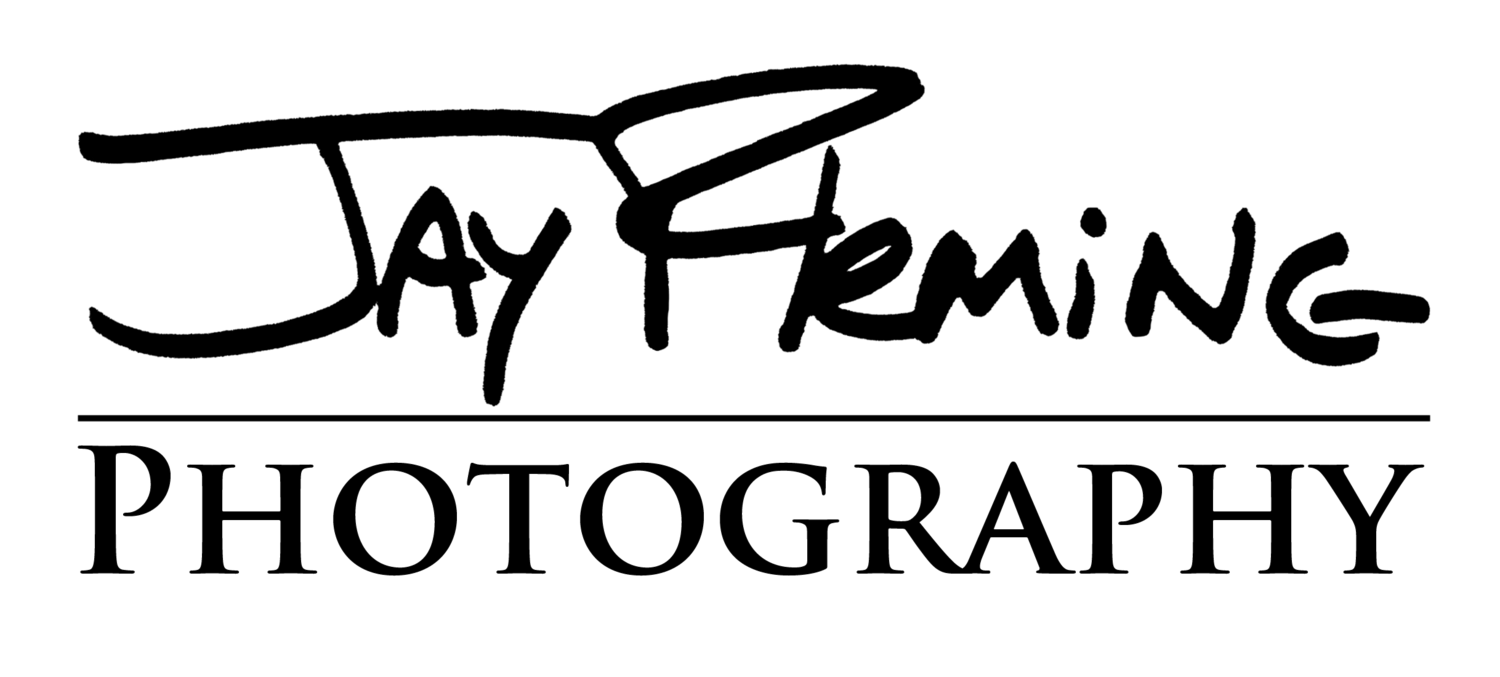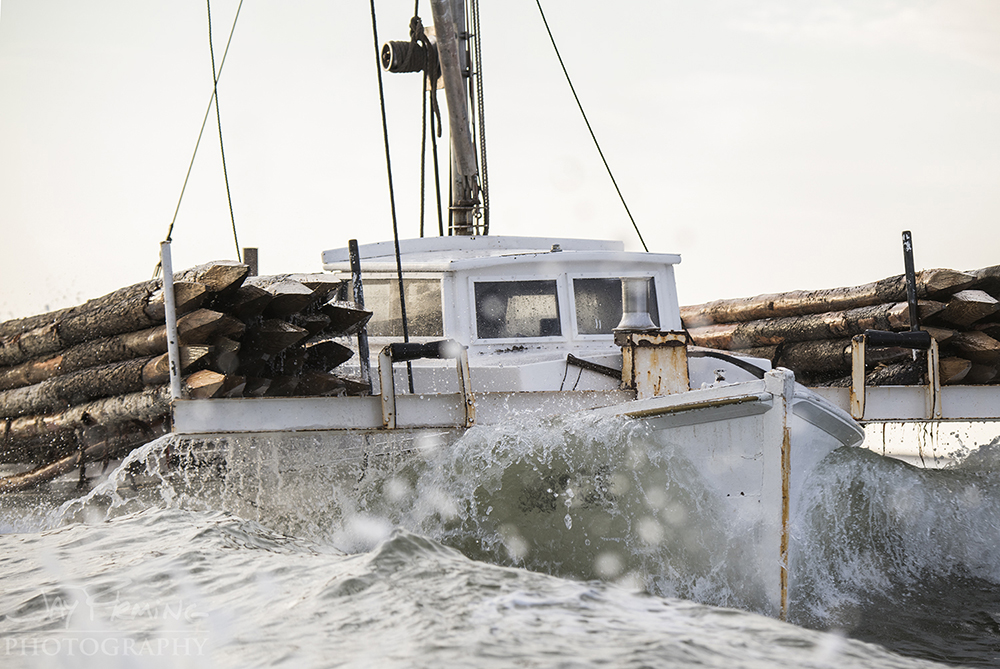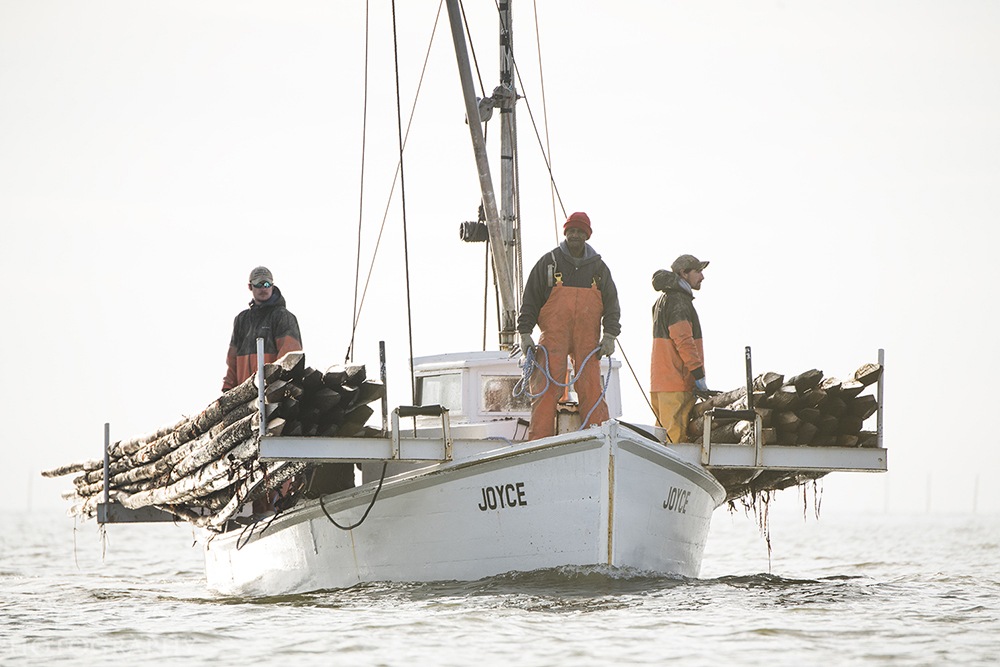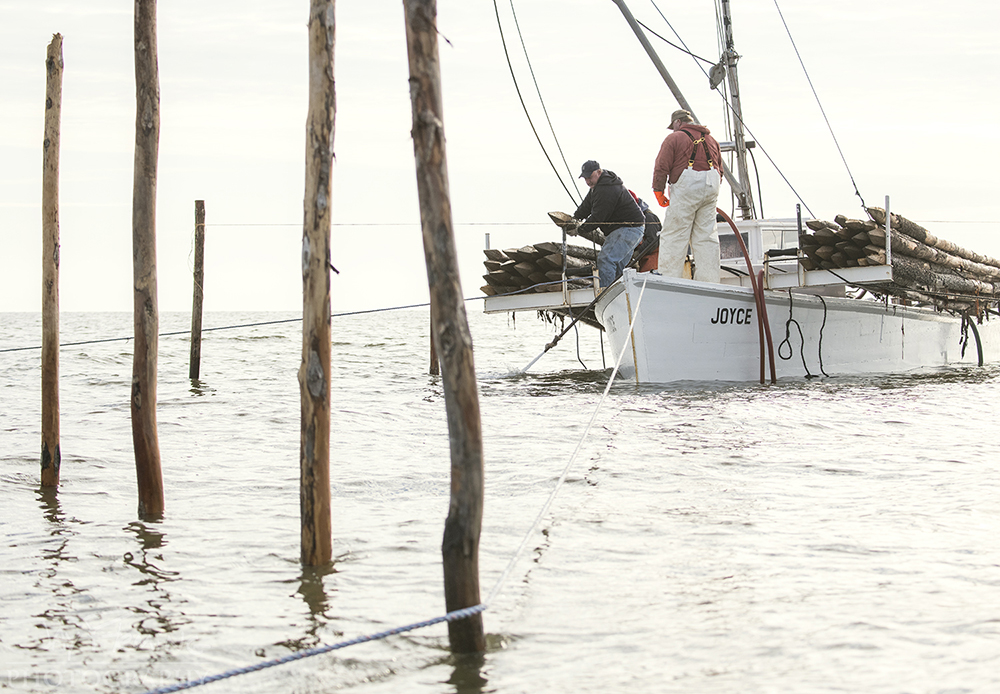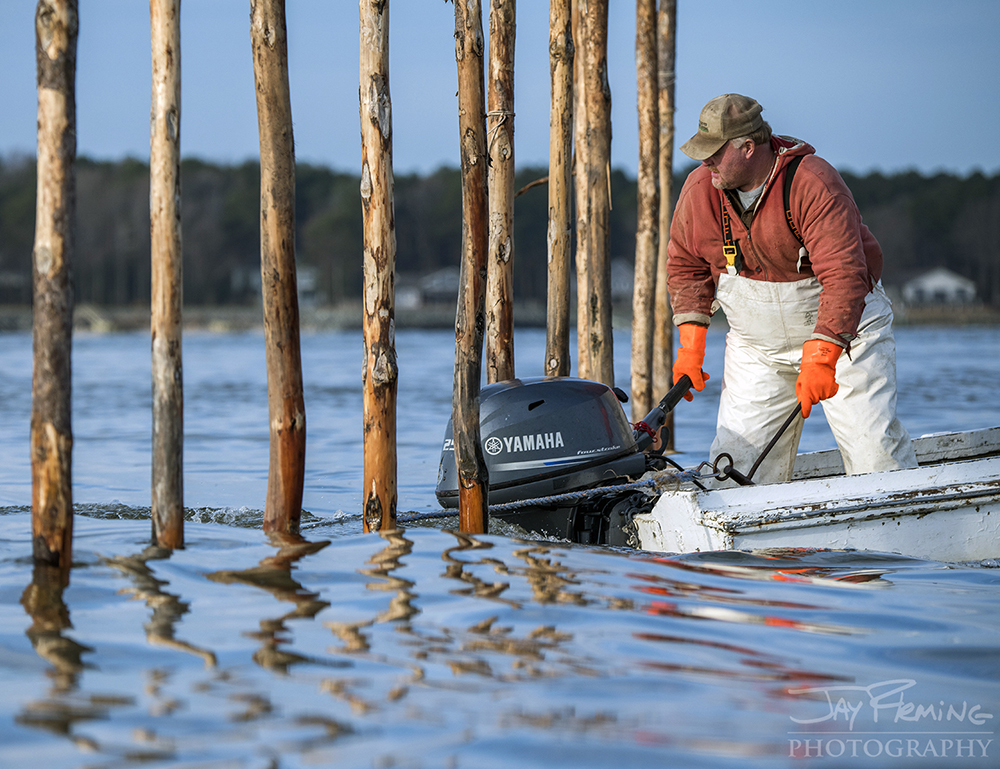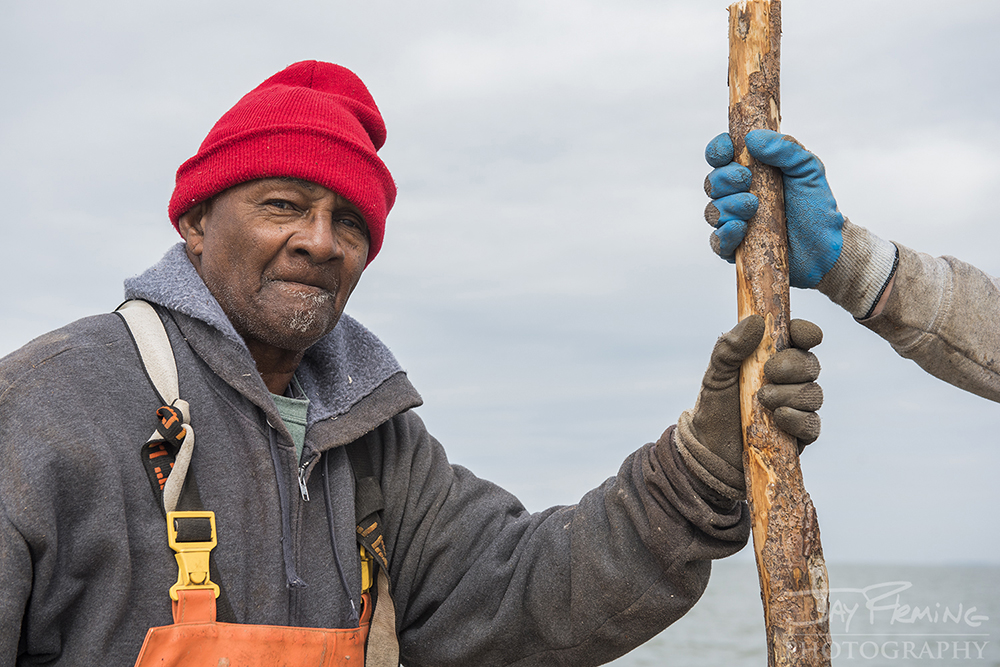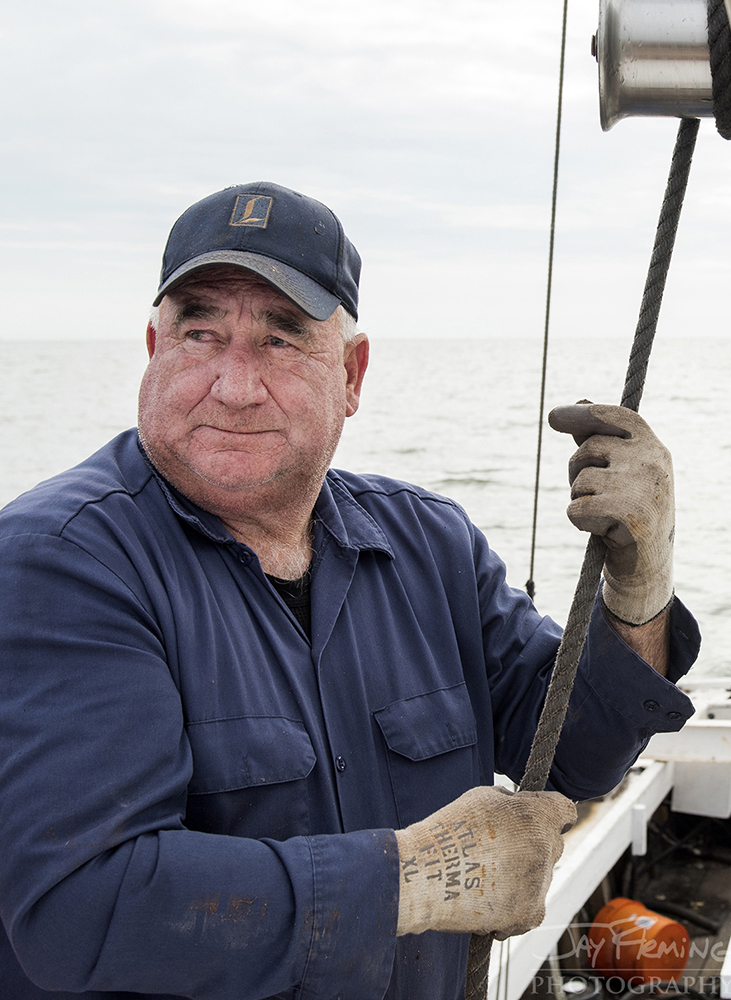On Tuesday - March 6th - I was in Reedville, VA to photograph Lewis Seafood setting their gear for the 2018 fishing season. The Lewis family has fished pound nets near the mouth of the Potomac River for multiple generations. After cutting and sharpening poles, mending nets, and dipping net all winter, they were driving poles into the bottom.
Other Reedville fishermen were taking advantage of the calm seas on Tuesday to get poles out into the bottom. After setting the poles, which are the foundation for the net, they will set their net and start fishing. The first run of fish that they will see is the spring Bunker run which will supply crab potters up and down the bay with bait.
Fishing Bay Yacht Club - Richmond, Virginia Lecture
WINTER PROGRAM
Jay Fleming on 'Working the Water'
6:30PM, March 7, 2018 - Richmond Omni
On March 7, Jay Fleming, renowned Chesapeake Bay photographer and author of Working the Water, will speak about his passion for the Chesapeake Bay and people who make their living on and around the Bay. This is a great opportunity to show your friends that Fishing Bay Yacht Club is about great people and great sailing in one of the most beautiful and interesting sailing areas on the East Coast.
The reception will be held at the Richmond Omni, 100 S 12th Street in the Magnolia Room. Cocktails (cash bar) and light hors d'oeuvres will be served at 6:30, speaker at 7pm. Tickets are $15. Registration available online at https://www.fbyc.net/.
Copies of Working the Water and prints will be available for purchase. Space is limited, so please register by Feb. 28th.
Conowingo Dam - Floodgates - Sediment
What lies beneath the surface in Conowingo Reservoir presents what might be the largest threat to the health of the Chesapeake Bay. For years, Conowingo Dam has trapped sediment from entering the Bay. The velocity of sediment laden runoff from Pennsylvania and New York would be slowed down in the reservoir, giving the sediment time to settle to the bottom. Now, according to experts, the reservoir has reached its maximum capacity for the sediment load that it can handle - meaning that during every large runoff event we have, the sediment just flows unimpeded down the river and into the Bay.
There are two other dams upstream of Conowingo with reservoirs that are also maxed out with sediment - Holtwood and Safe Harbor Dams, both of which are in Pennsylvania.
This photograph shows water rushing out of the floodgates at Conowingo Dam into the lower Susquehanna River near Darlington, Maryland.
Susquehanna River - Trash and Debris
I was invited out on the Susquehanna River by watermen from Havre de Grace, Maryland to photograph the debris and trash that was fouling their gear while fishing for Yellow Perch. A large amount of trash and debris was carried downstream when Conowingo Dam's floodgates were opened after the heavy rains in late February. This trash and debris will eventually end up in the main-stem of the Chesapeake Bay.
Trash accumulating behind Conowingo Dam in the Conowingo Reservoir.
Plastic, Styrofoam and other pieces of floating trash accumulating along the shorelines of the Susquehanna River.
Havre de Grace watermen - Steve Lay, Buddy Sexton and Tim Mortus with fish pots used to target Yellow Perch near Perryville, Maryland.
Yellow Perch, Pumpkinseed and trash collected while fishing near Perryville, Maryland.
